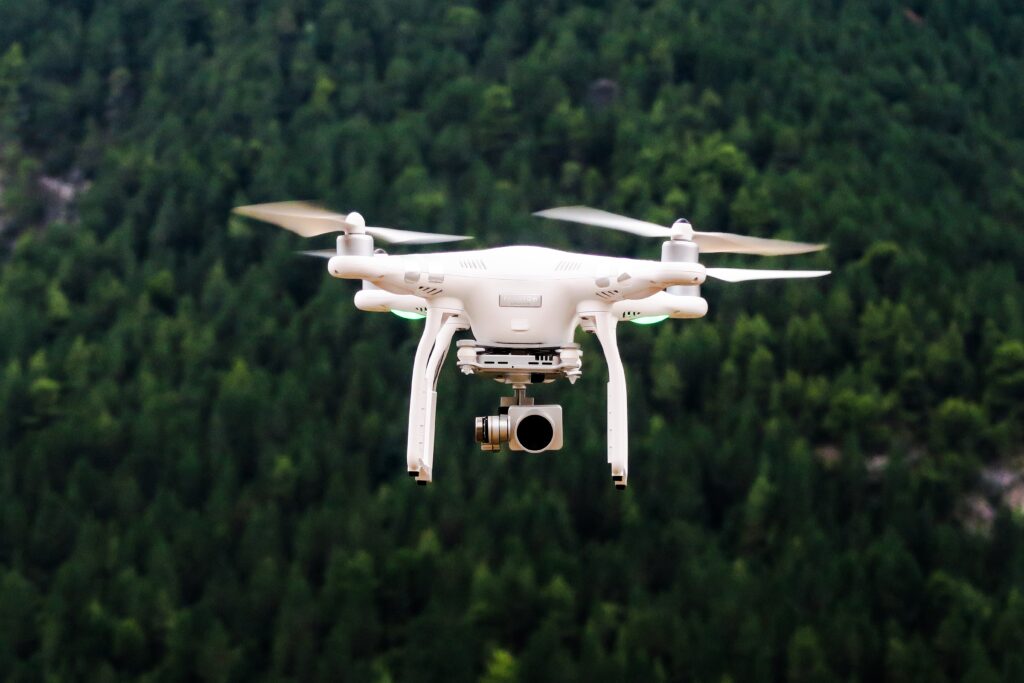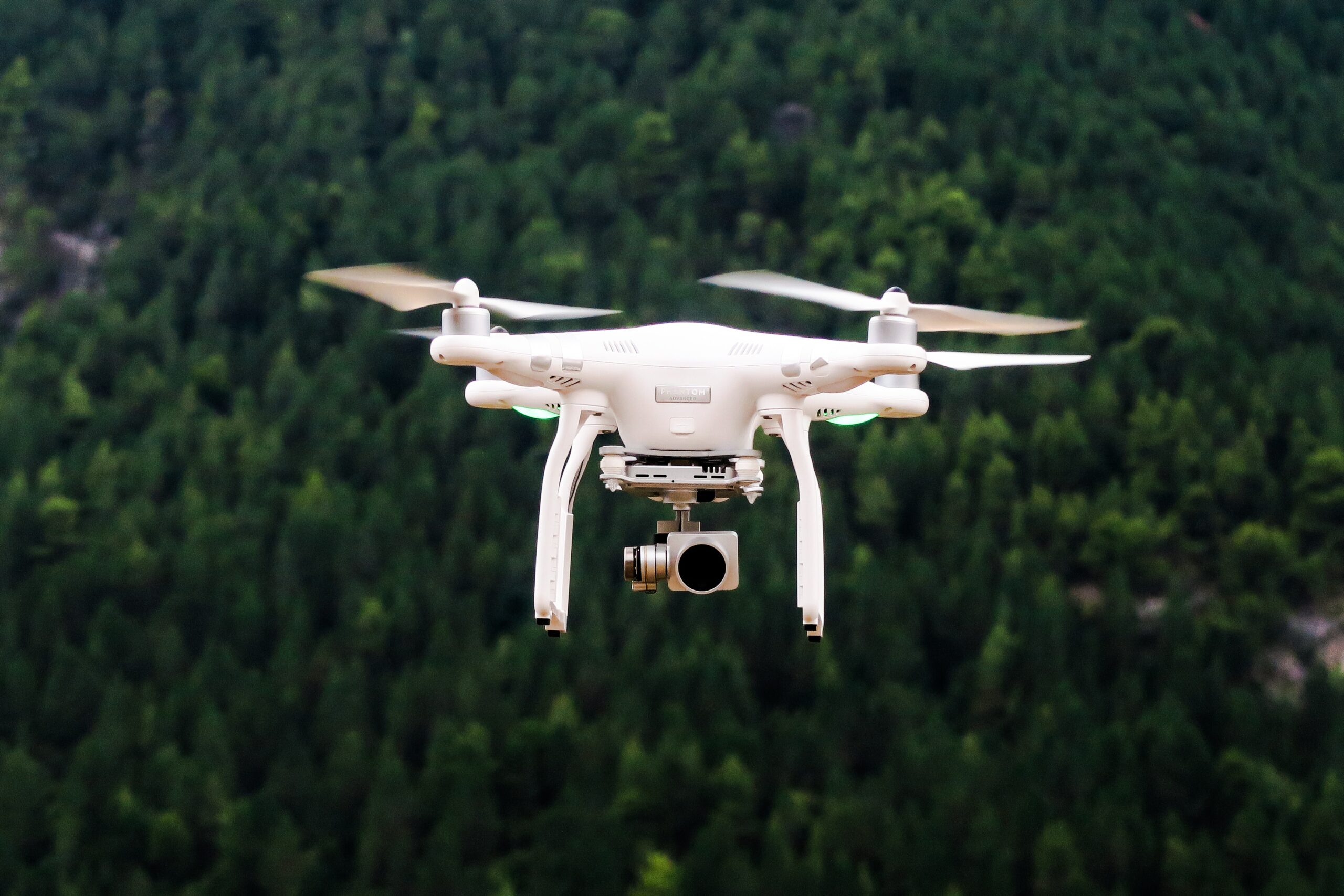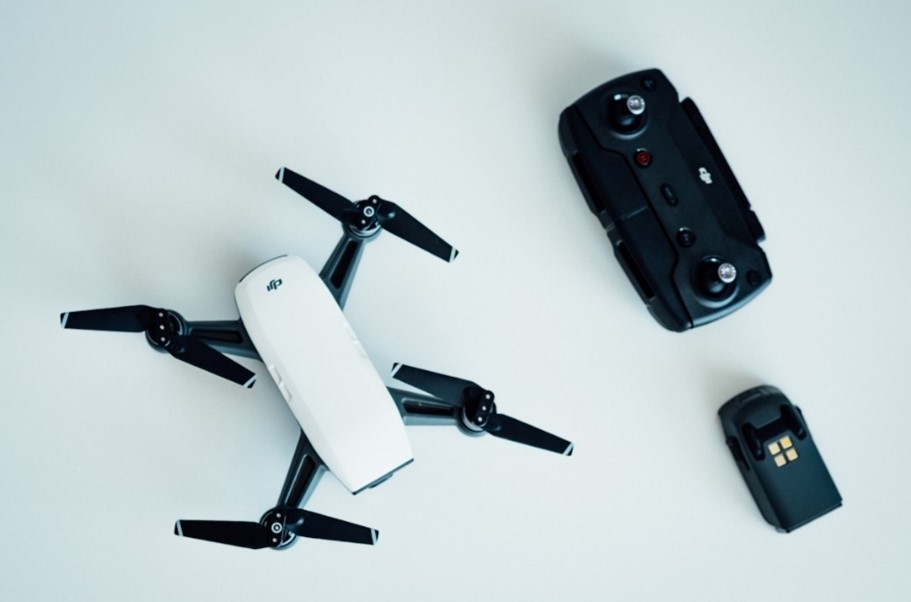This is the third in a series of blogs highlighting findings from Dr Anna Jackman’s ESRC-funded research project Diversifying Drone Stories. This blog is co-authored with Barrister Louise Hooper.

Beyond the battlefield, drones are increasingly popular tools, airborne across a growing range of commercial, civil and recreational applications. Alongside camera and sensor-laden drones enabling the capture of aerial imagery and data, drones are also employed to carry and transport items or goods.
Potential for malicious misuse
While drones enable a range of benefits and opportunities, their widespread availability, comparatively low cost, flight range and capacity for remote and/or pre-programmed operation, can also make drones attractive tools for malicious misuse and/or criminal intent.
From flights in proximity to manned aircraft, transporting contraband into prisons, outfitting with weaponry and the attempted assassination of political leaders, both careless and inconsiderate drone use and the more deliberate misuse of drones for criminal acts has prompted safety, security and nuisance concerns, and garnered significant media attention globally.
While noting that the majority of users possess and operate drones lawfully, analysis suggests that during 2021 over 6000 incidents involving drones were reported to the police and that it remains difficult to ascertain the true scale of illicit drone activity in the UK.
Complex legal questions
Alongside security concerns, drone incidents and misuse also raise complex legal questions. This is emphasised by the UK’s aviation regulator, the Civil Aviation Authority, and the Department of Transport’s tasking of the Law Commission to review the law around autonomous flight.
In the Diversifying Drone Stories research project’s recently launched report, we drew upon research with lawyers working across diverse specialisms and expertise to explore the legal dimensions of drone incidents and misuse. Written for lawyers working on drone cases and drone policy makers more widely, the report:
- offers an overview of the technology, it’s regulation, and current approaches to enforcement;
- examines a range of examples of reported drone incidents and identifies a range of themes and legal challenges;
- considers the potential legal dimensions of emerging capabilities and proposed models of future airspace;
- provides considerations for lawyers working on drone-related cases; and offers a series of recommendations.
The report’s key findings
Following an overview of what drones are and can do, how they are currently regulated and current approaches to enforcement in the UK, the report considers examples of drone incidents and misuse and the key themes identified by lawyer participants. Legal issues identified included:
- Intention (for example, intentional and non-intentional actions and incidents, and the challenges of determining intent);
- Actor (reflecting on the alleged victim and perpetrator);
- Nature of Criminality (using drones to commit an existing criminal act versus using a drone for novel criminal activity);
- and Legal context (whether the incident may be understood as criminal or civil).
Delving into some of the practical challenges drone incidents and misuse can raise, we then introduce six case studies. From drones being flown remotely to the implications of the cases in relation to existing laws and legal processes (such as trespass and nuisance), participants highlighted a range of challenges around process (for example, identification of the drone pilot, chain of evidence).
We were also eager to explore potential legal considerations surrounding emerging capabilities such as drone livestreaming and drone-assisted facial recognition, with participants arguing such developments raise legal questions and challenges around data (for example, privacy rights, intellectual property, data servers, and consent), damage and liability (for example, determining intention, securing damages and uninsured operators).
Looking forward to potential drone futures, we discussed artificial intelligence (AI), namely the use of digital technology to create systems capable of performing tasks commonly thought to require intelligence. Highlighting developments such as Microsoft researchers using ChatGPT to control drones, participants expressed concerns about the legal implications of AI upon responsibility, meaningful control and culpability.

Proposed models of future airspace
We were also interested in the potential legal dimensions of proposed models of future airspace. While drones are commonly operated within an operator’s Visual Line of Sight (VLOS), we recognise the growing desire for drones operated Beyond Visual Line of Sight (BVLOS) (that is, without using visual reference and instead requiring either a technical capability to see and avoid potential conflictions, or a form of mitigation such as segregation), as demonstrated by under-development projects such as Skyway, a drone superhighway proposing to connect 165 miles of airspace above 6 UK towns and cities, including Reading. In discussion of BVLOS, participants raised issues around where drones would be routed, how their scaled operation would fit with existing planning laws, and what increased operations would mean for noise.
Key considerations and recommendations for lawyers
The report closed by identifying key considerations for lawyers working on drone-related cases, and offering a series of recommendations. Our recommendations included:
- further attention to the provision and presentation of information about regulation;
- calling for a review of existing offences;
- the development of further guidance and resources for lawyers (for example, by the Crown Prosecution Service);
- the development of training and guidance related to drone use, incidents, misuse and enforcement for key drone stakeholders;
- further consideration of potential future harms and legal challenges accompanying drone futures;
- inclusive consultation on regulation and policy; and understanding the potential for drone-enabled or assisted discrimination.
You can access the Drone incidents and misuse: Legal considerations report here, as well as the wider research project’s findings, including the Industry Toolkit, Industry Report, Police Report and Police briefing.


